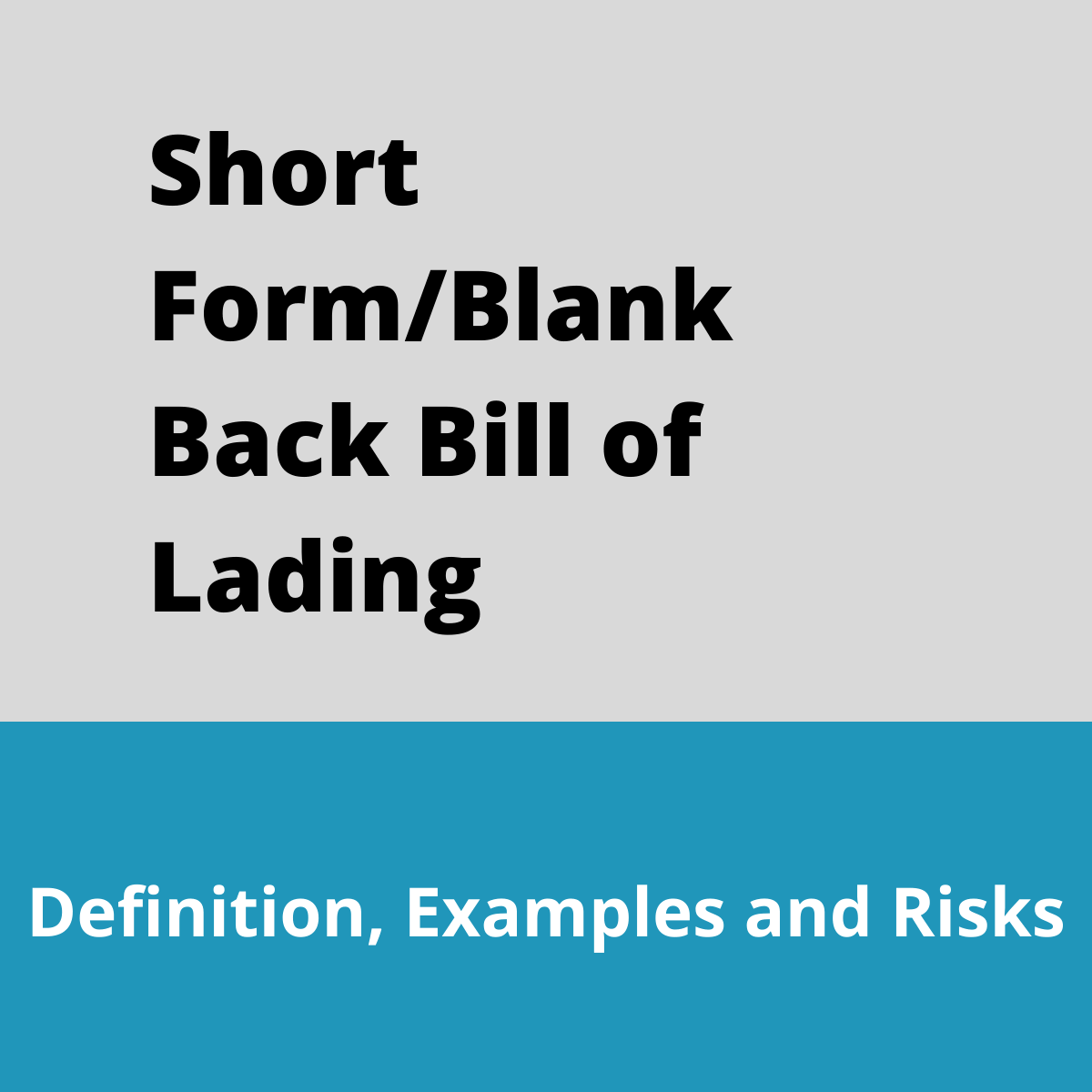A bill of lading is a generic name of a transport document, which is used in sea shipments.
As a transport document a bill of lading is expected to fulfill three basic functions:
- it evidences that the goods have been received by the carrier;
- it evidences the terms of the contract of carriage
- it is expected to allow transfer of ownership of the goods
There are several types of bills of lading in circulation such as multimodal bill of lading, forwarder bill of lading, charter party bill of lading, negotiable bill of lading and non-negotiable bill of lading etc.
Each type of bill of lading has unique characteristics. Different types of bills of lading may not be able cover all functions.
As an example, non-negotiable bill of lading does not allow transfer of ownership of the goods.
Bill of Lading and the Contract of Carriage
If you look at the reverse side of a bill of lading, you will probably see a contract written in small font size. This contract known as the contract of carriage.
It is ordinary that a bill of lading contains the contract of carriage on the reverse side. Especially in container shipments.
Every container liner has a standard bill of lading contains the contract of carriage on the reverse side.
But some bills of lading are issued with empty reverse sides.
These kind of bills of lading are called Blank Back Bills of Lading or Short Form Bills of Lading.
Examples:
Long Form Bill of Lading Example:
Hapag-Lloyd Bill of Lading: Hapag-Lloyd is one of the biggest container carriers in the world. Hapag-Lloyd uses a standard bill of lading contains a contract of carriage printed on the backside of its bill of lading. It is also possible to see an excerpt of carriage terms on the right bottom of the front page.
Short Form Bill of Lading Example:
BIMCO Blank Back Form of Non Negotiable Liner Waybill: BIMCO is the world’s largest international shipping association, with around 1,900 members globally. BIMCO produces ready to use shipping contracts.
BIMCO Blank Back Form of Non Negotiable Liner Waybill is a perfect example for a short form bill of lading.
What are the Risks Associated with Short Form/Blank Back Bills of Lading
The parties on a bill of lading such as consignee, notify party and shipper can not reach to carrier’s contract of carriage with ease under Short Form/Blank Back Bills of Lading.
Hiding the contract of carriage by carrier can attract some sort of unpleasant questions to the minds of the parties on a bill of lading.
The main risk may associate with a blank back bill of lading would be a third party interference on delivery of goods to the consignee, by claiming that his interests have not been fulfilled by the carrier.
Of course there must be a secret contract had to be signed between the third party and the carrier, on which the parties of the bill of lading have no information about.


